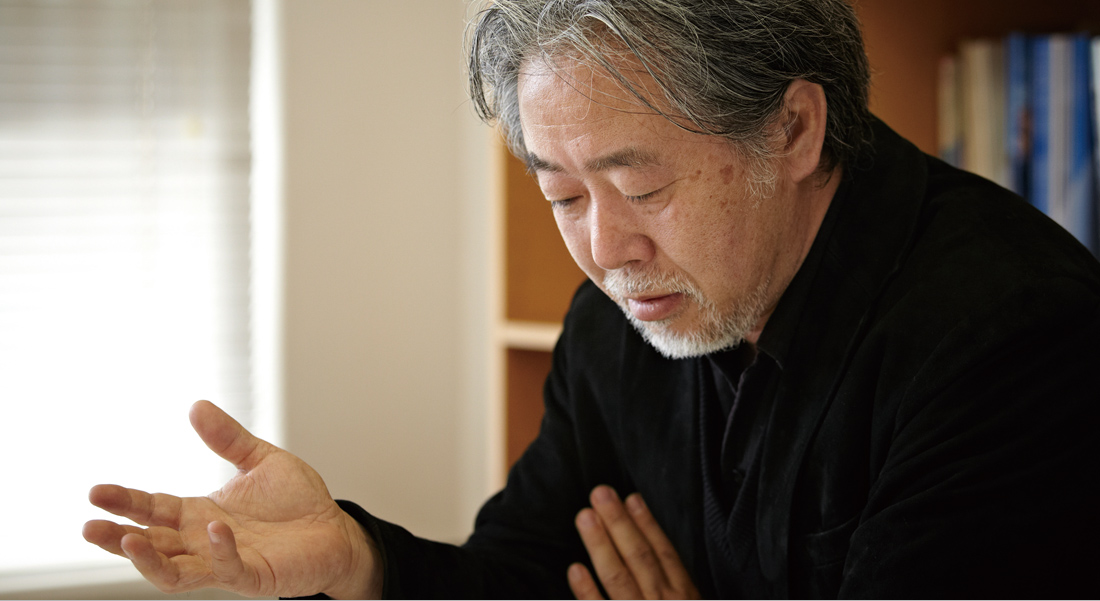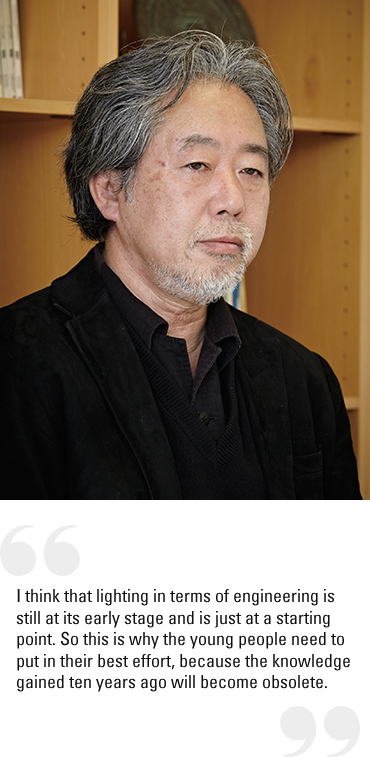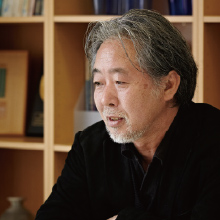Feature

FROM OUTSIDE2018.12.21
How Can Lighting Help to Face
One’s Emotional Problems? #3
Architect/ Hiroshi Naito
Grasping the Hearts of the General Public
We also have to think about the strategy to approach the general public. This has to do with “whose side are you on?” which was discussed earlier, but if lighting designers and architects try to propose something to the general public, then people would think, “Oh, you came to promote yourself.” That is because the basic relationship of trust is not built. This is a very important matter, so for this event, maybe the venue should not have been a place like Tokyo Big Sight, but a place more accessible for the general public. It should also be a place where government authorities can come easily. In my opinion, professions that cannot grasp the heart of the general public will soon go out of business. In this advanced information society, the general public may have more information than designers who seclude themselves. In the old days, the designers and professionals knew more things, and they “offered” their knowledge to the hoi-polloi. This is a European way of thinking. But nowadays, girls walking on the streets may have a better grasp of the essence of things and their consciousness may be more advanced. I think architects and designers do not understand the significance of this at all. It may be that apart from technical aspects, the client may know more about architecture and the essence of architecture. Today, we are in such a time. This is why we need to work even harder in order to grasp their hearts.
Thinking Ahead

I think that the future of lighting design will link engineering and neurology. We are in the habit of viewing light emitting objects like liquid-crystal displays for hours of the day. This must be the first time in the human history, and no one knows how this will affect our nervous system. It has not been around long enough to understand the implication and effect of these things. In this sense, I think that lighting in terms of engineering is still at its early stage and is just at a starting point. So this is why the young people need to put in their best effort, because the knowledge gained ten years ago will become obsolete. Because we are in such state today, there will be more demand to incorporate new information.
At the symposium, I was quite convinced with what Charles Stone (P8) had mentioned. He has a western, calm and humanistic commonsense in him―which I hate to admit (laughs). I felt that the Japanese lighting designers should learn from his stance because it fits the mood of the current era in which emotional problems are addressed. In the process of learning, it would be good if lighting design of Asia can find its unique place, without selling out in a cheap manner.
It reminded me of a story in *Peter Rice’s autobiography, about a “Moonlight Theater” where he has an idea of lighting a theater with only the moonlight using a reflector in the mountains of southern France. It is interesting to note that someone like Rice who was at the forefront of technology had this thought, and I think there are hints for engineering, the human brain, and cultures from this story.
The difficulty with symposiums is that one is not able to bring things. It is not possible to show the actual thing that is being discussed. This is also the case with architecture, and so because the actual works are not presented, the more you talk about it, the shadier it sounds. I feel that there is a way for lighting designers to present their work that can only be done by them.
One idea would be a session or a symposium in which the lighting is recreated to experience the actual thing. I think more people will show interest in lighting this way. But everything will eventually come, and it seems that the IALD has taken the first big step.
(3/21/2013 At Hiroshi Naito’s office)
PROFILE
 Architect/ Hiroshi Naito
Architect/ Hiroshi Naito
Born in 1950 in Kanagawa, Japan. Graduated from Department of Architecture and Architectural Engineering, Faculty of Science and Engineering, Waseda University in 1974. Attained his master’s degree in 1976. Opens Naito Architect & Associates in 1981 after working for Fernando Higueras (Madrid) and Kiyonori Kikutake. Appointed as Professor in the Department of Civil Engineering at the University of Tokyo from 2002 to 2011. Chief Juror of the Good Design Award from 2007 to 2009. Vice President of the University of Tokyo from 2010 to 2011.
Honorary Professor of the University of Tokyo since 2011. Major works include “Toba Sea-Folk Museum” 1992, “Chihiro Art Museum” 1997, “The Shimane Arts Center” 2005. Among many other award winning architectural works, Naito is also a prolific author.
